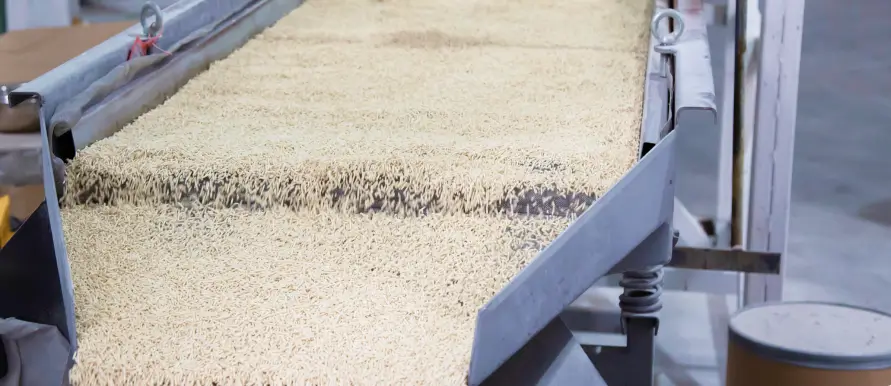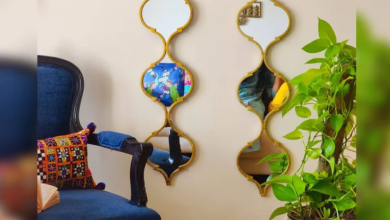Why Eco-Friendly Cat Litter Factories are on the Rise: Meeting the Needs of Today’s Pet Parents

The pet care industry is experiencing a remarkable shift as eco-conscious consumers demand more sustainable and environmentally friendly products. One area that has seen significant transformation is the cat litter industry, where traditional clay-based options are being replaced by eco-friendly alternatives. Let’s take a closer look at why eco-friendly Cat litter factory are thriving and how they’re changing the landscape for today’s pet owners.
1. Changing Consumer Expectations
Today’s pet parents are more informed and conscious of their environmental impact. Traditional cat litter, made primarily from clay, is mined through processes that are harmful to the environment. In contrast, eco-friendly litter is crafted from renewable materials like recycled paper, pine, corn, and tofu. Eco-conscious pet owners prefer these alternatives, as they’re safer for their pets and the planet. Cat litter factories are responding to this shift by adopting greener production practices to align with customer values.
2. Sustainable Materials Driving Demand
Eco-friendly cat litter factories are on the rise because of a newfound commitment to sustainable materials. Here are a few commonly used options:
- Pine and Wood Chips: These are by-products from the lumber industry, effectively repurposing waste material into a biodegradable product.
- Corn and Wheat: These grains provide excellent absorbency, are biodegradable, and offer natural odor control without the need for synthetic chemicals.
- Tofu: Made from soy waste, tofu litter is highly absorbent, dust-free, and easy to dispose of in an environmentally friendly way.
- Recycled Paper: Post-consumer waste paper is another biodegradable material that offers a soft, dust-free solution for cats with sensitivities.
These materials not only make litter biodegradable but also reduce reliance on environmentally damaging clay mining, making eco-friendly cat litter an appealing choice.
3. Reduced Environmental Impact of Production
To produce cat litter sustainably, factories are adopting practices that reduce their carbon footprint. Some initiatives include:
- Switching to Renewable Energy: Factories are increasingly powered by solar or wind energy, reducing their dependence on fossil fuels and greenhouse gas emissions.
- Energy-Efficient Production Lines: By investing in energy-saving technology, factories can significantly cut down on energy waste, helping them reduce operational costs and environmental impact.
- Water and Waste Reduction: By adopting closed-loop systems, factories can recycle water and minimize waste generated during production. This ensures that resources are used responsibly, keeping production as sustainable as possible.
These changes in production processes not only lower the environmental impact but also make the manufacturing of eco-friendly cat litter more sustainable in the long run.
4. Commitment to Zero-Waste and Closed-Loop Systems
Eco-friendly cat litter factories are increasingly embracing zero-waste initiatives to meet environmental targets and consumer demand. These practices include:
- Recycling By-Products: Any waste generated during production can be repurposed, minimizing landfill waste and creating a more efficient production process.
- Compostable and Biodegradable Packaging: Eco-friendly factories often use packaging made from recycled materials or compostable materials, allowing pet owners to minimize waste when disposing of the litter.
- Closed-Loop Systems: By recycling materials used in the production process, factories reduce both their waste output and need for new raw materials. Some facilities even capture heat and reuse it, further improving efficiency.
These zero-waste practices not only make the product more appealing to eco-conscious consumers but also help cat litter factories stand out in an increasingly competitive market.
5. Focus on Health and Safety for Pets and People
Traditional clay litter, especially those containing silica dust, has been known to cause respiratory issues in cats and humans. Eco-friendly cat litter factories prioritize dust-free or low-dust production to ensure a safer product. Here’s how these factories are making healthier litter options:
- Natural Ingredients for Dust Control: By using natural binding agents, factories can create litter that produces little to no dust.
- Advanced Filtration Systems: Factories implement air filtration systems that capture dust during production, creating a healthier work environment and resulting in a cleaner product for end users.
- No Harmful Chemicals: Eco-friendly cat litter avoids synthetic additives and harsh chemicals, reducing the risk of allergic reactions and respiratory issues for both cats and their owners.
By focusing on pet safety, these factories create a product that provides peace of mind for consumers and makes their homes healthier for everyone involved.
6. Odor Control through Natural Solutions
One of the main factors in choosing cat litter is odor control. Eco-friendly factories understand this and have developed natural methods to address odor without relying on artificial fragrances. Here are some ways they manage odor naturally:
- Activated Charcoal: Known for its odor-absorbing qualities, activated charcoal provides a natural solution to keep litter boxes smelling fresh.
- Plant-Based Enzymes: Enzymes derived from plants break down odor-causing bacteria, ensuring the litter box stays fresh without chemical additives.
- Herbal and Essential Oils: Some eco-friendly brands add a hint of lavender or chamomile for fragrance, which can have a soothing effect on cats while naturally neutralizing odors.
These natural solutions appeal to pet owners who prefer products free from synthetic fragrances, as these can sometimes be irritating to pets and humans alike.
7. Biodegradable and Compostable Packaging Solutions
Eco-friendly factories are not just focused on the litter itself; they also provide sustainable packaging options. Traditional litter packaging is often made from plastic, which isn’t biodegradable. To reduce environmental waste, eco-friendly factories are using:
- Recycled Cardboard: Cardboard packaging can be recycled or composted, significantly reducing waste.
- Compostable Materials: Packaging made from biodegradable materials provides an eco-friendly option that breaks down naturally.
- Bulk Buying Options: Bulk options reduce the need for excess packaging, allowing consumers to stock up while minimizing waste.
Sustainable packaging practices help reduce the environmental impact of each bag of litter and make the entire product more eco-friendly from start to finish.
8. Transparency and Certification
Consumers want transparency, especially when it comes to eco-friendly products. Many factories now provide detailed information on their manufacturing practices and materials, building trust with consumers. Common transparency practices include:
- Sustainability Reports: Factories often release annual reports that outline their sustainability goals and achievements.
- Certifications: Certifications like EcoCert and USDA Organic help prove the factory’s commitment to environmental standards.
- Clear Ingredient Labels: By listing every ingredient, eco-friendly brands reassure consumers that their products are safe for both pets and the environment.
With transparency and certification, eco-friendly cat litter brands stand out in the market and meet consumer demand for products they can trust.
9. Innovations and the Future of Eco-Friendly Cat Litter Factories
The eco-friendly cat litter market is poised for growth, and manufacturers are constantly innovating to stay ahead of the curve. Some of the future trends include:
- Advanced Biodegradable Materials: Research into materials that break down more easily and completely could make future litters even more eco-friendly.
- Carbon-Neutral Production: Factories are setting ambitious goals to become carbon-neutral, balancing their emissions through offsets or renewable energy sources.
- More Sustainable Partnerships: Collaborations with environmental organizations allow cat litter companies to support conservation efforts while enhancing their brand’s eco-friendly reputation.
These trends highlight a promising future for eco-friendly cat litter, where both pet care and environmental care can go hand in hand.
Conclusion: A Greener, Cleaner Future for Pet Care
Eco-friendly cat litter factories are meeting the demands of today’s environmentally conscious pet owners by using sustainable materials, improving production practices, and prioritizing health and safety. As demand continues to grow, these manufacturers are not only setting new industry standards but also helping consumers make responsible, green choices for their pets.
Supporting eco-friendly cat litter not only benefits the planet but also promotes a healthier environment for our beloved pets and a more sustainable future for everyone.








